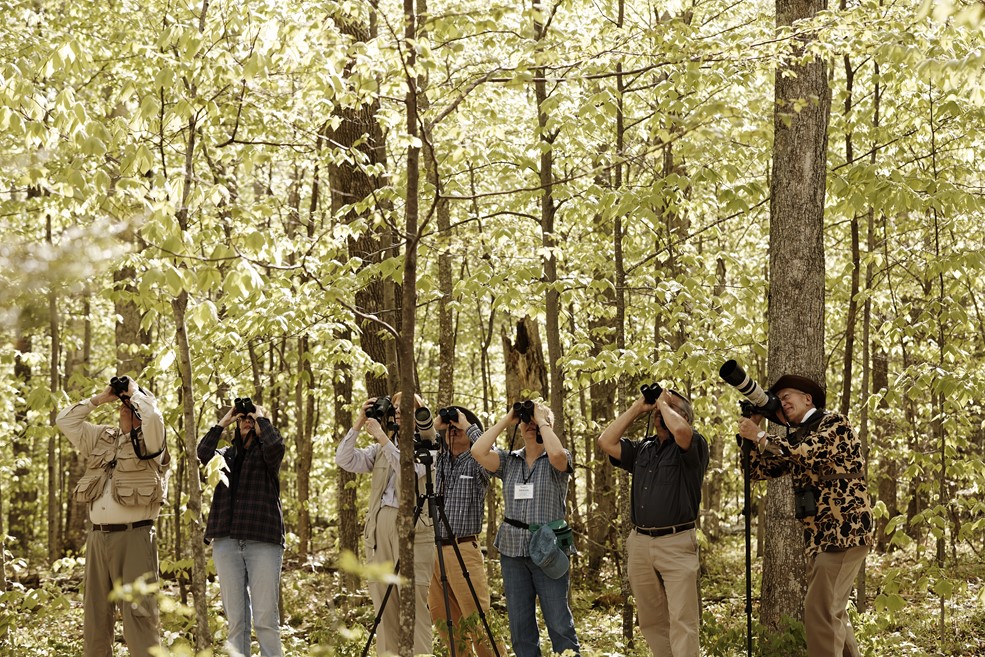
Birding & Bird Watching in Door County
The Best Bird Watching in Wisconsin
If you're attuned to the movements and sounds of our feathered friends, there's plenty of activity to keep your eyes and ears aflutter in Door County. The same pristine natural features that draw millions of human visitors to Door County each year attract multitudes of birds as well. Numerous preserved and protected landscapes—along with 300 miles of varied shoreline, 19 county parks, two nature sanctuaries, 13 protected areas of the Door County Land Trust, and an official Bird City Wisconsin designation—create a uniquely safe and peaceful environment for our avian friends.

Birding in Spring
More than 300 species—that's more than a third of North America's native bird population—have been spotted along the peninsula and outlying islands of Door County, making this a Wisconsin birding hotspot.

Summer, Fall, & Winter Birding
When leaves turn vivid shades of orange, yellow, and red with the onset of autumn,
Even when trees become bare and snow falls upon the rolling hills, bluffs, and meadows in winter, many birds, including the black capped chickadee and Northern cardinal, can be found braving the winter wind and frigid temperatures. Many other birds are tough enough to stick it out through the Wisconsin winter, with turkeys, bald eagles, pine siskins, common redpolls, pheasants, and crows all among them.

Door County Birding Tips
- On your drive up here, listen to bird calls on tape, CD, or phone app and learn to identify a few favorites.
- In spring, visit shorelines with tall pine trees to catch migrating birds. They flock to the pine trees to pick midges that have come out of the shallow water.
- Head out for some bird watching after a day of strong winds from the south, which help migrating birds fly north.
- Find a high-quality pair of binoculars that offer an objective lens measurement between 30 and 45 mm, and try for magnification from 6 to 8.
- In Potawatomi State Park or Peninsula State Park, watch for large, rectangular holes in dead trees. These holes are created by pileated woodpeckers looking for ants.

Birding with Ethics
According to the American Birding Association, it's key to exercise restraint and caution to avoid exposing birds and wildlife to danger, and you should always stay on roads and trails as much as possible to avoid habitat disturbances. This includes maintaining a generous distance from nests, nesting colonies, roosts, and feeding areas as well as never trying to attract threatened, endangered, or rare species.
Finally, remember to limit your use of sound recordings, camera lights, and other artificial means of attracting and filming birds.

Bald Eagles: A Comeback Tale
Bald Eagles were once extremely rare to find in the skies above Door County, but the birds have made an amazing comeback in the last decade or so. Local bird experts estimate just one pair of eagles nested here in 1995, about 11 pairs in 2012, and by 2014, there were 15–20 pairs.
Look for Bald Eagles in tall pine trees near shorelines. People often mistake turkey vultures for Bald Eagles, but the former holds its wings upward at a distinct dihedral when soaring, while the latter holds its wings horizontally.
Common Door County Birds
More than a third of all North American bird species have been documented in the waters and on the lands of Door County, amounting to more than 300 in total. Download the Birding Guide (PDF) or check out these birding maps for even more detailed information.
- White-crowned sparrow
- Baltimore Oriole
- Red-bellied Woodpecker
- Tundra Swans
- Ruby-throated Hummingbird
- American Robin
- Eastern Kingbird
- Northern Flicker
- Sandhill Crane
- Turkey Vulture
- House Finch
- Great Blue Heron
- Osprey
- Red-breasted Nuthatch
- Eastern Towhee
- Rose-breasted Grosbeak
- Indigo Bunting
- Brown Thrasher
- Common Mergansers
- Northern Cardinal
- Downy Woodpecker
- Eastern Meadowlark

Discover Door County
Newsletter


